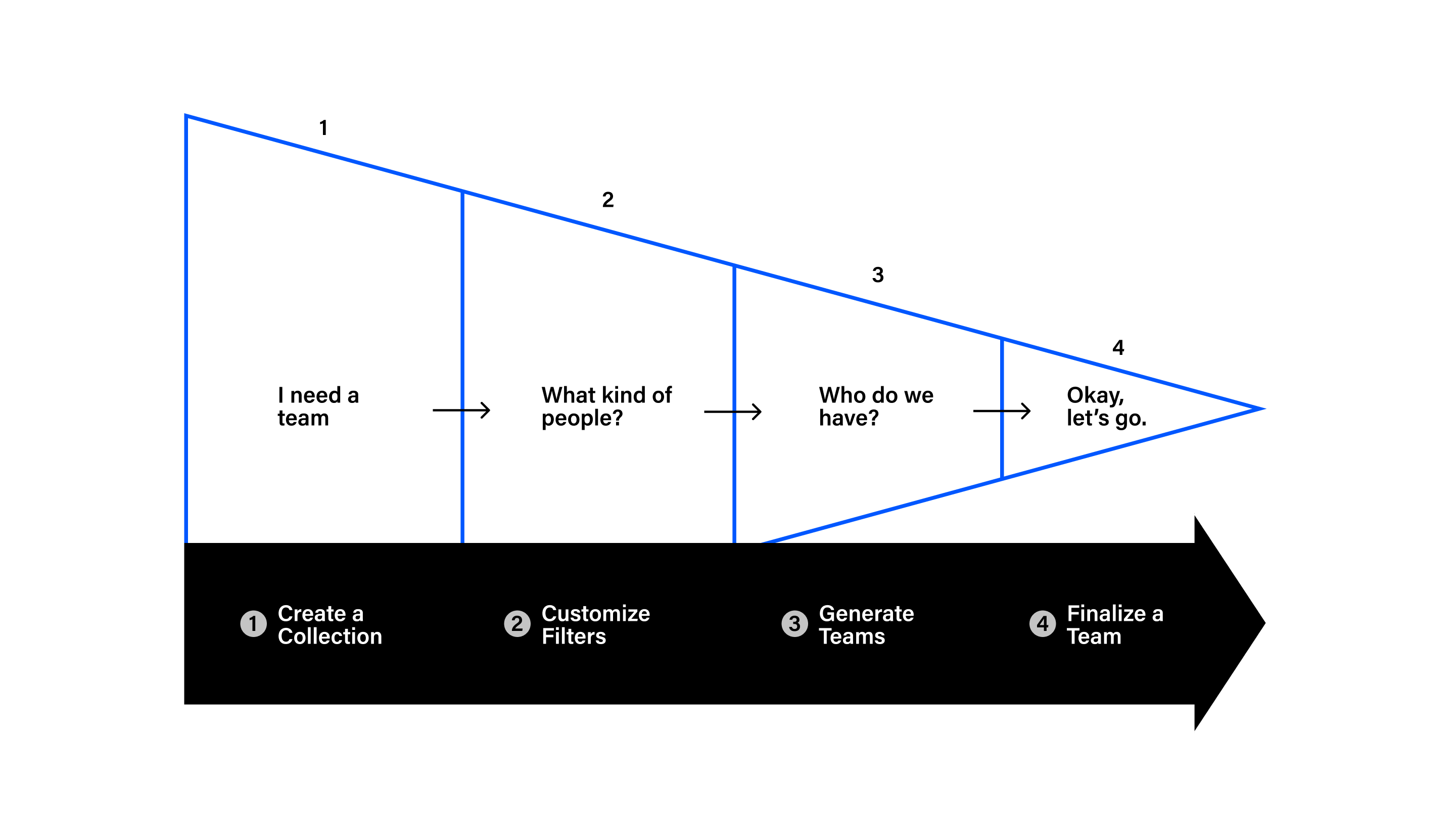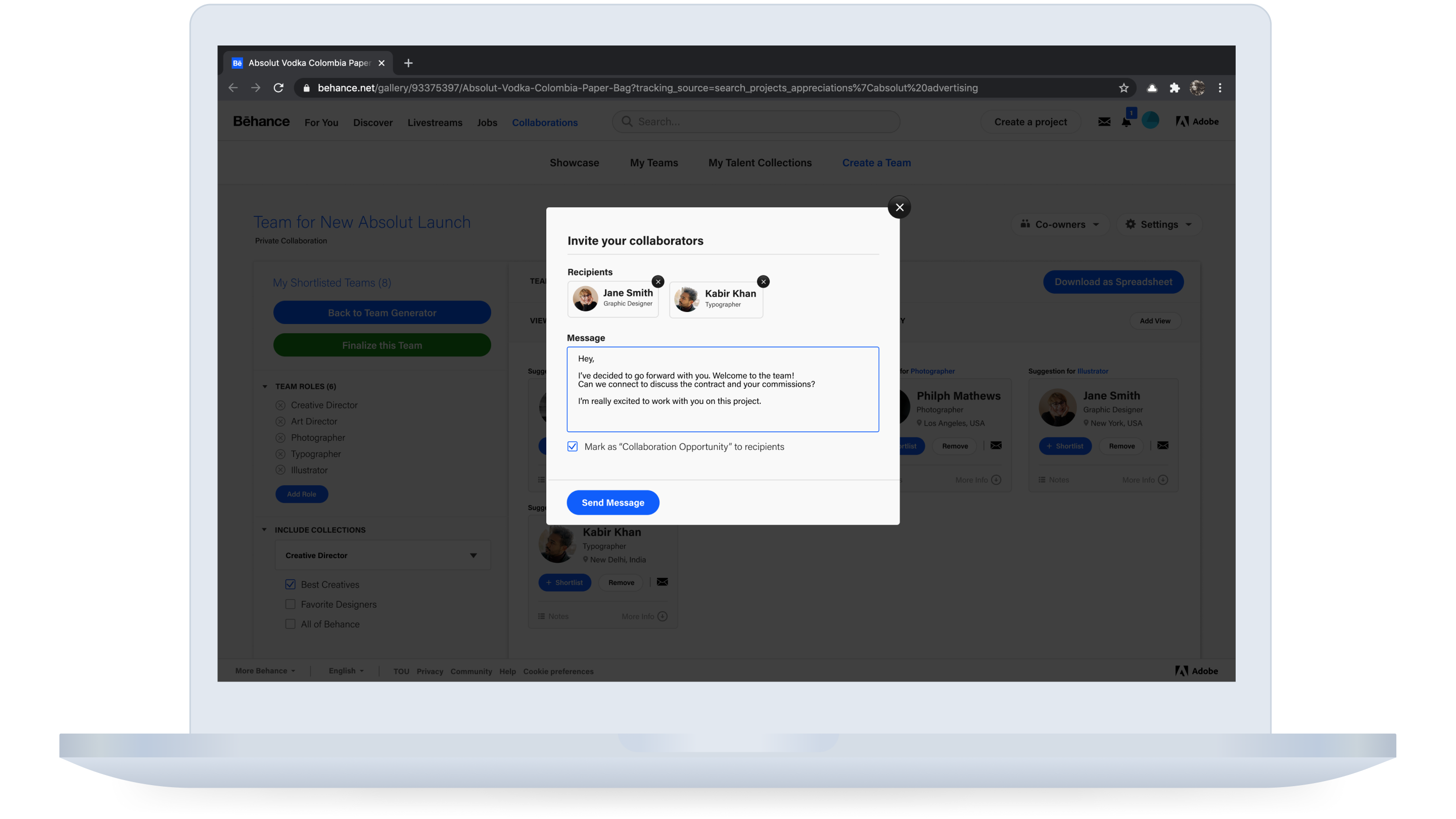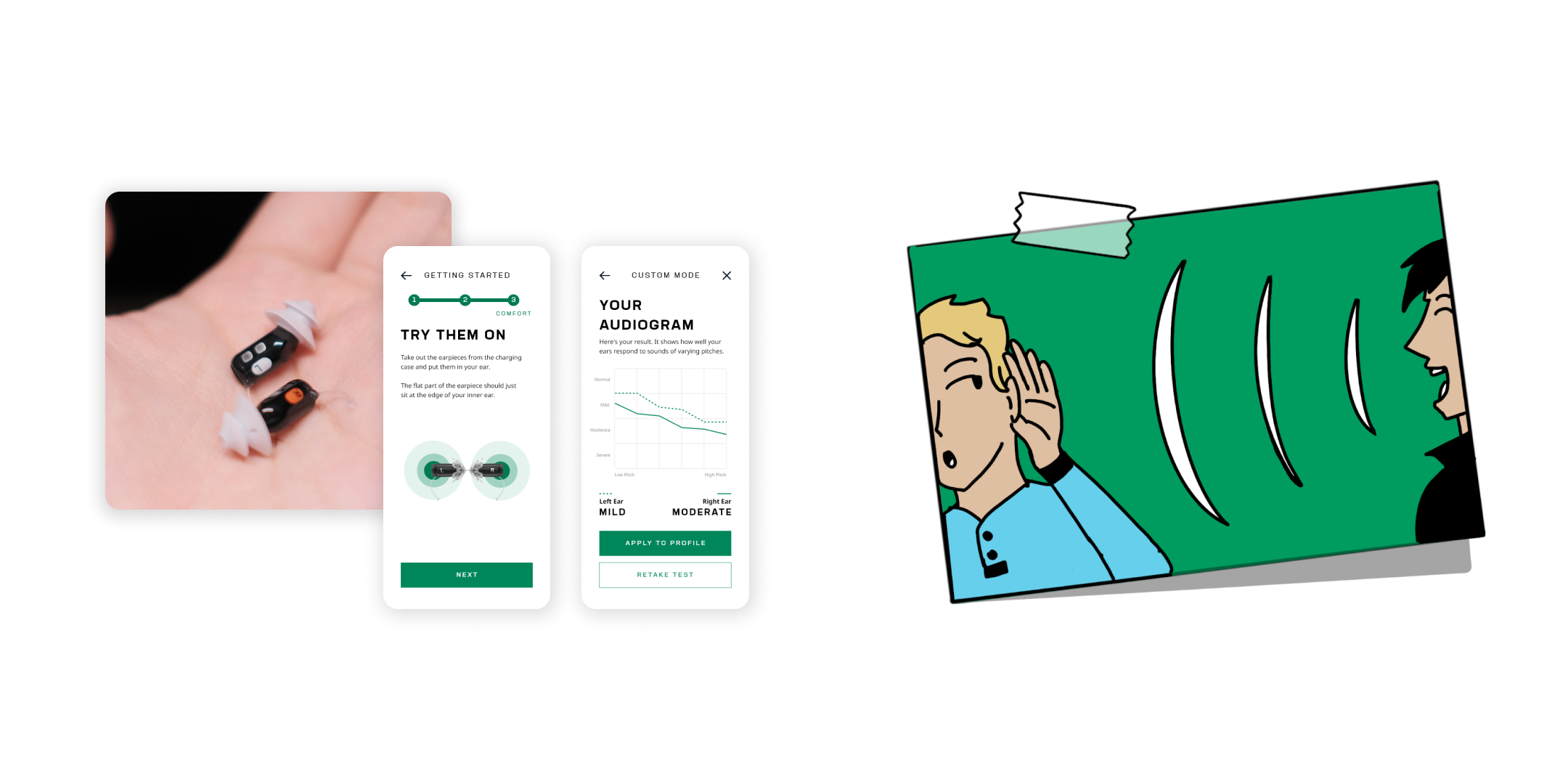
Introduction
Want someone with experience? Someone who likes pineapple on pizza? (Uh.. not for me)
Set your own way of filtering candidates for the team. Then save it for future use. Scalable.
No more shuffling between post-its and rearranging spreadsheets. Get balanced and diverse team suggestions by the Team Generator.
Don't like this team? Get a new one. Let the system do the shuffling while you sip your boba tea.
Have a team and good to go? Invite them onboard! Leave personalized feedback once the project ends.
The Team Generator will use the feedback to improve future team compatibility suggestions. Get even better teams on future projects.
Research
Problem Context
Amongst the hassle of finding new people and creating a balance of skills, team creators get confused and ultimately end up picking people they either know or have worked with before. This process is riddled with ambiguity. Even worse, when it comes to gauging creative skills, there is no one-size-fits-all.
1 : 300
is the typical ratio of a designer hired relative to new employees.
1 - 10
is the typical company size for 25% (highest) of working designers.
77
percent design workers regarding collaboration as the highest soft skill.
User Interviews
The goal now was to understand what the team creation process looks like. I conducted five one-on-one interviews (10 total) with design agency leads, business venture stakeholders, and teachers who have put together teams of design students - they all had different approaches but some common thinking patterns:

Team Health Framework
Below is a typical design team's lifespan. Because there are several great task-oriented team tools out there but none for the curation and onboarding of people, we decided to focus on the forming (gathering the right people) stage. Zooming in, it's the process of how one thinks through filtering out candidates.

Zooming in the forming process, here's how team creators think as they funnel out potential team members.

Key Insights
Diversity is Critical
A different POV/opinion is also considered to be a creative skill. So it is crucial to have a variety of them.
Complementing Strengths
Having one of each kind isn't enough. Teammates need to balance out each others' strengths and weaknesses.
Going with Gut
Because the entire process is so tiring, people end up taking instinctive decisions to save time and effort.

Opportunity
How might we use data to reduce ambiguity and create a well-informed team of creatives?
Solution Approach
Design Principles
Humane
Instead of being a report card to point out weaknesses, this tool is designed to highlight and build over strengths.
Reusable
A good team indicates success for the filtering process, and so the same metrics can be used again.
Freedom
Team creators should be able to control and mold their selection criteria as they see fit.
The Team Generator
Co-Lab's crown jewel, the Team Generator, can be seen as a self-learning system with a feedback loop. It iteratively learns what your filters are for a team, as well as what other users (with similar projects as yours) have chosen, to suggest you better teams in future projects.

Why Behance?
Behance (now owned by Adobe) is a portfolio showcase platform for creatives. It has been active since 2005 and has more than 10 million users (as of 2018). It is still one of the most popular platforms and has an extremely wide pool of creative talent to choose from. What it doesn't have, is tools to form a team for collaborative projects amongst this wide pool.

The Approach
To reduce the effort as much as possible, we knew we had to cater to the entire experience of gathering the right people. The solution is divided into four parts that cater directly to the major need occurring at every step of the process:

1. Creating a collection



2. Customizing filters



3. Simulating teams




4. Finalizing a team


Testing with users
In six rounds, we tested the concept, the mid-fidelity, and the high-fidelity prototype screens with our primary research participants and regular Behance users. We wanted to understand the extent to which they will use this feature to create their future design teams. Here's what they had to say about it:

Future Work
Improving Interfaces
There will be an increase in collaboration-based projects on Behance. We need to design a showcase page catering to these projects, with an emphasis on team publishers and the roles they played in the project.
As more creatives become eager to join publicly posted open collaborations, how can they see and even influence who they get to work with is a future direction co-lab can take?
Third-party Integrations
We believe this feature will be more efficient if it can seamlessly integrate with other team-based tools. For example - Google Suite for meetings, uploading work and calendars, or Monday, Trello, etc. for project management.

Learnings
This is my first web design and data visualization project. I learned a lot about integrating existing design systems into a new feature, systems thinking, and information architecture. There's more to be done before this solution is actually deployable. But being ethically vigilant and reducing the internal biases of the Team Generator, as it gets more data, will turn out to be crucial.
I hope that Co-Lab makes creating design teams as easy as customizing a Subway sandwich. (*munching noises*)
Other Projects

AdobeBetter admin console UI, leading to higher task completion rate and $100k+ future innovation budget

Zepp HealthBetter hearing aid mobile UX, leading to 1000+ downloads in first year and Red Dot Product Design Award 2022

(Yes, people do use Outlook too.)
Copyright © Hardik Kumar. All illustrations are hand-crafted (with an enormous amount of care) so please use them with credit and for educational purposes only. Thanks!
Copyright © Hardik Kumar. All illustrations are hand-crafted (with an enormous amount of care) so please use them with credit and for educational purposes only. Thanks!
Made with ✍︎ Space Grotesk, ❤︎ and Semplice.
Made with ✍︎ Space Grotesk, ❤︎ and Semplice.
No ✂︎ post-its were harmed during the making of this website.